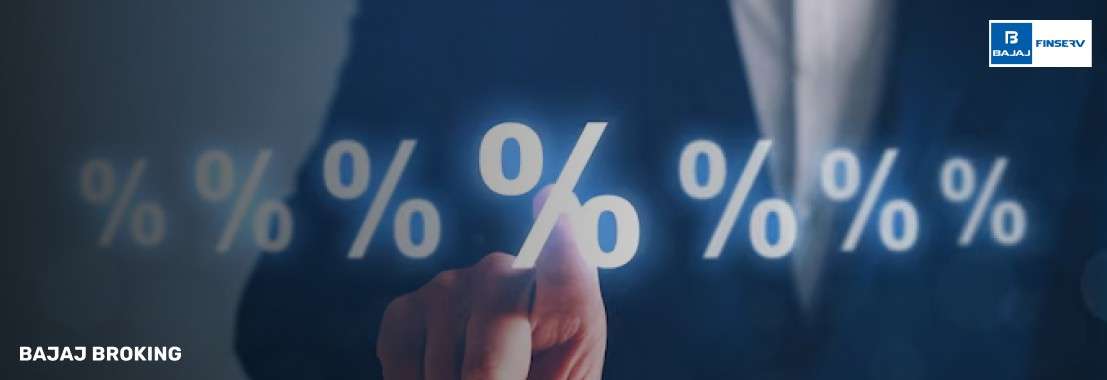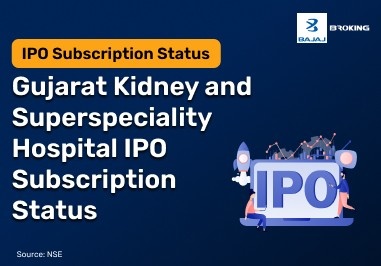Bank rate and repo rate are monetary policy tools that are used by the Reserve Bank of India (RBI) to manage the money supply, inflation, and overall interest rates in the economy.
While these rates are important to understand the monetary side of the economy, they can also impact the stock market. This is because the stock market is a part of the overall financial system of India. Hence, if you are a stock market participant, you should develop a thorough understanding of these interest rates. Also, you must understand how these rates are different from each other.
Do read this blog, as it explains these rates in detail and also elucidates upon bank rate vs repo rate.
What is Bank Rate?
The bank rate is the interest rate charged by the Reserve Bank of India (RBI) when it lends money to commercial banks for the long-term. It is also the interest rate at which the RBI discounts or buys bills of exchange and similar commercial instruments. The bank rate is one of the most effective monetary policy tools.
When the RBI increases the bank rate, commercial banks have to pay a higher interest on their borrowings from the RBI. Hence, typically, an increase in the current bank rate causes commercial banks to hike the rate at which they provide loans to their borrowers.
If the money supply or inflation is too high and people are spending a lot, the RBI can increase the bank rate to curb the money supply and reduce inflation.
On the other hand, when the RBI decreases the current bank rate, commercial banks also reduce the rate at which they lend to their borrowers. When the money supply or inflation is very low and the economy is struggling to grow, the RBI can decrease the bank rate, thereby allowing commercial banks to lend at a lower rate, which can help the economy to grow.
What is Repo Rate?
The repo rate is the interest rate at which commercial banks borrow money from the RBI for the short-term. Typically, when banks face a liquidity crunch, they request the RBI to lend them money. The RBI usually lends them money. However, banks have to provide government securities to the RBI as collateral to borrow money.
The term “repo” is the short-form of “repurchase agreement.” When banks borrow money at the repo rate from the RBI by providing government securities as collateral, they provide an assurance that they will repurchase the same securities in the future, usually at a higher price, which includes the payable interest that is calculated by using the repo rate.
Key Differences Between Bank Rate and Repo Rate
To gain a more profound understanding of the bank rate and the repo rate, you need to understand the important differences between them. So, please refer to the following table to get a grip over “bank rate vs repo rate.”
Criteria
| Bank Rate
| Repo Rate
|
Meaning
| This is the rate at which commercial banks borrow from the RBI for the long-term.
| This is the rate at which the RBI lends money to commercial banks for the short-term.
|
Collateral
| While providing funds to banks at the bank rate, the RBI does not make them provide collateral.
| The RBI provides funds for the short-term to banks at the repo rate and makes them provide government securities as collateral.
|
Purpose
| The RBI’s objective in using the bank rate is to control inflation and bring a level of stability to the economy.
| The purpose of the repo rate is to manage short-term liquidity.
|
How frequently is it changed?
| The bank rate impacts an economy in the long run. Hence, it is not changed very frequently.
| As the repo rate is used to address short term liquidity needs, it can be changed more frequently.
|
Functions of the Bank Rate and the Repo Rate
The bank rate and the repo rate are some of the most effective monetary policy tools used by the RBI to control money supply, manage inflation, and stabilise the overall financial system. Commercial banks borrow money from the RBI using the bank rate (for the long run) and the repo rate (for the short run).
Hence, when the RBI increases the bank rate or the repo rate, it becomes costlier for commercial banks to borrow money from the central bank. To manage their profitability, banks often increase their interest rates when they have to pay a higher bank rate or repo rate to the RBI.
So when the RBI increases either the repo rate or the bank rate, it usually means that borrowing money is likely to become more expensive for all kinds of borrowers. Hence, increasing these rates is an effective way to curb inflation or reduce money supply.
Conversely, when an economy is struggling to grow and people are not willing to borrow, the RBI can reduce the bank rate or the repo rate, which can make it easier for banks to provide funds to their borrowers at a lower rate.
As people can borrow at a lower rate, it encourages them to borrow more, which can provide a stimulus to an economy.














